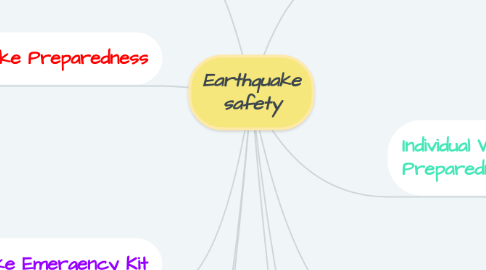Earthquake safety
by Patcha Channel


1. Seismic Hazard Mitigation Policy
1.1. Free Standing Partitions
1.1.1. Must Be Braced or Anchored to Prevent Them From Tipping Over
1.1.2. Submit Bldg. Services iRequest for Service
1.2. Overhead Cabinets Closed/Latched
1.3. No Heavy Objects Above Your Desk
2. Home Earthquake Preparedness
2.1. Learn First Aid/CPR
2.2. Organize Neighborhood to Be Self-Sufficient After an Earthquake
2.3. Prepare Earthquake Emergency Kit
3. Home Earthquake Emergency Kit
3.1. 1 Gallon of Water per Person per Day
3.2. First Aid Kit/Book
3.3. 3 Days of Food
3.4. Non-Electric Can Opener
3.5. Flashlights, & Batteries
3.6. Essential Medications
3.7. Blankets/Sleeping Bag
4. During an Earthquake – Indoors
4.1. Stay There! Do NOT Run Outside
4.2. Stay Calm & Remember the Phase
4.2.1. Duck – And Look for Cover
4.2.2. Cover – Under a Sturdy Desk or Table
4.2.3. Hold – Onto the Furniture Leg Until Shaking Stops
5. Outdoors
5.1. Stay Clear of Buildings & Power Lines
5.2. If Driving
5.2.1. Stop If Safe, But Stay Inside Car
5.2.2. Stay Away from Bridges, Overpasses & Tunnels
6. UCOP Earthquake Preparedness
6.1. Each Floor Containing
6.1.1. Food & Water for Three Days
6.1.2. First Aid Kit
6.1.3. Rescue & Repair Tools
6.1.4. Flashlights, Battery-Operated Radio, Spare Batteries
6.2. Individuals
6.2.1. Walking Shoes
6.2.2. Individual Prescription Medications (Enough for Three Days)
